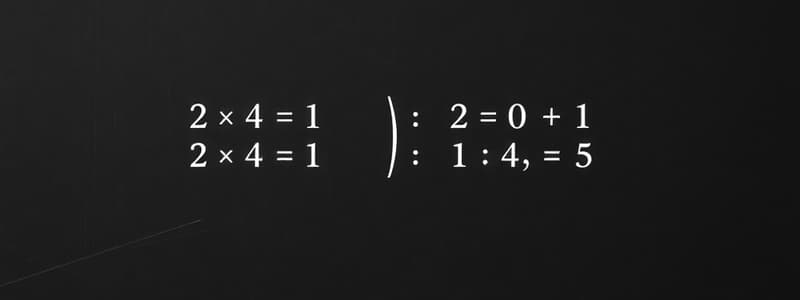Podcast
Questions and Answers
What role does the dictionary play in solving the problem of finding two numbers that add up to a target?
What role does the dictionary play in solving the problem of finding two numbers that add up to a target?
- It allows storing multiple pairs of numbers at once.
- It enables O(1) lookup time for previously seen numbers. (correct)
- It stores numbers as values and their indices as keys.
- It aids in sorting the list before iterating through it.
What is the time complexity of the solution provided for finding the indices?
What is the time complexity of the solution provided for finding the indices?
- O(n log n)
- O(log n)
- O(n^2)
- O(n) (correct)
In what scenario will the algorithm return an empty list?
In what scenario will the algorithm return an empty list?
- When the list contains less than two numbers.
- If no two numbers in the list add up to the target. (correct)
- If two numbers that add up to the target are the same.
- When all numbers in the list are the same.
What happens when a complement is found during the iteration?
What happens when a complement is found during the iteration?
What is the space complexity associated with the algorithm?
What is the space complexity associated with the algorithm?
Why use the function enumerate() in Python?
Why use the function enumerate() in Python?
Flashcards
seen (dictionary)
seen (dictionary)
A dictionary used to store numbers (as keys) and their corresponding indices (as values) in the list. It allows quick lookup of numbers and their positions.
Calculate complement (secondNum)
Calculate complement (secondNum)
To find the complementary number in a list. This is achieved by subtracting the current number from the target value.
Check if complement exists in seen
Check if complement exists in seen
If the complement (secondNum) is found in the seen dictionary, return the index of the current number and the index of the complement. This indicates the pair of numbers that sum up to the target.
Store current number's index in seen
Store current number's index in seen
Signup and view all the flashcards
Edge case: No pair found
Edge case: No pair found
Signup and view all the flashcards
Study Notes
Finding Two Sum Indices
- Use a dictionary (
seen) to store numbers and their indices for fast lookups (O(1)). - Iterate through the input list (
nums) usingenumerateto get both the number and its index. - For each number (
num), calculate its complement (secondNum = target - num). - Check if the complement exists as a key in the
seendictionary. - If the complement exists, return the current index (
i) and the index of the complement from theseendictionary. - If no complement is found, store the current number (
num) and its index (i) in theseendictionary. - If no pair is found after iterating through the entire list, return an empty list (
[]).
Time and Space Complexity
- Time Complexity: O(n) – The algorithm iterates through the input list only once.
- Space Complexity: O(n) – In the worst case, all numbers and their indices are stored in the
seendictionary.
Studying That Suits You
Use AI to generate personalized quizzes and flashcards to suit your learning preferences.



